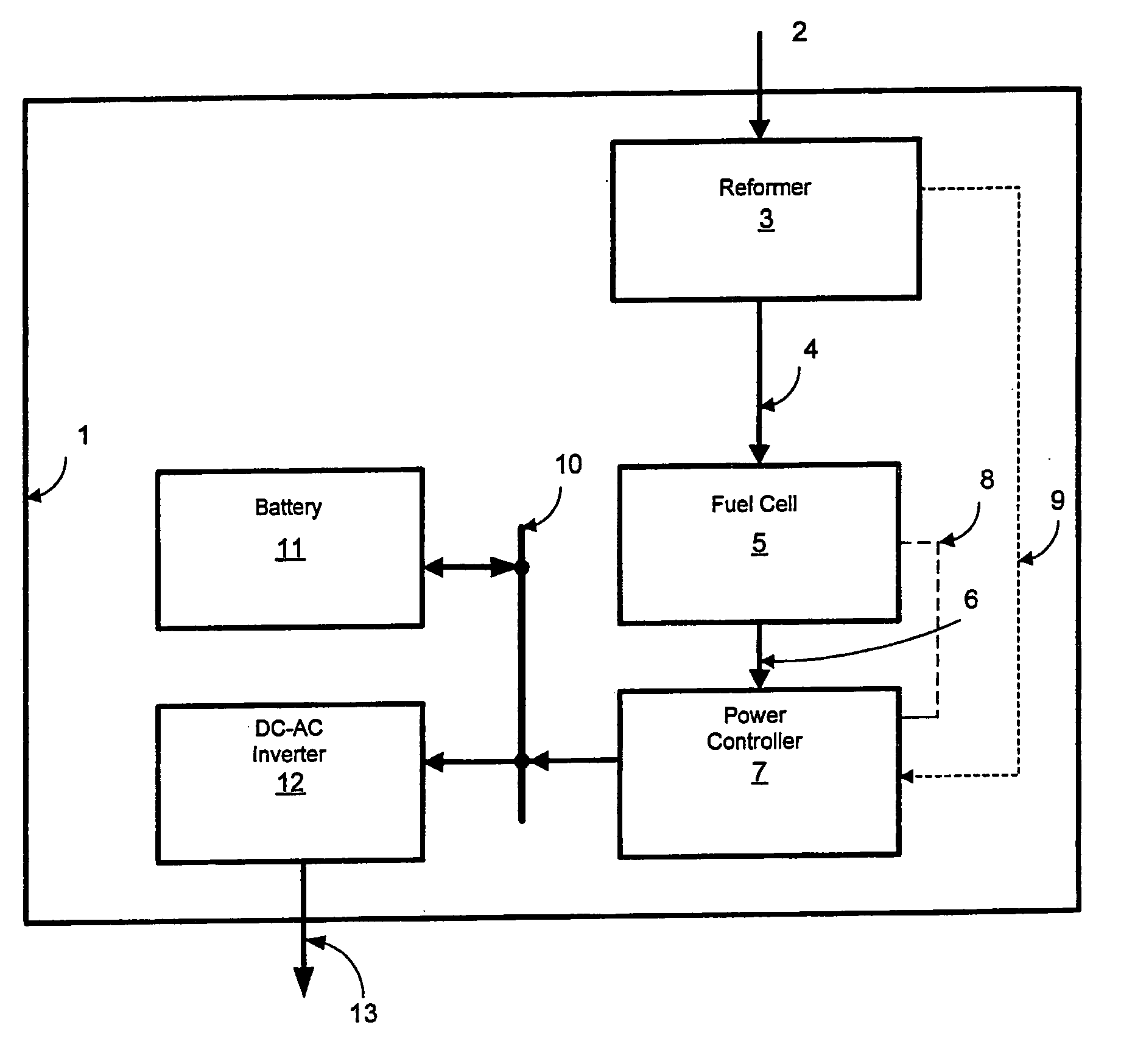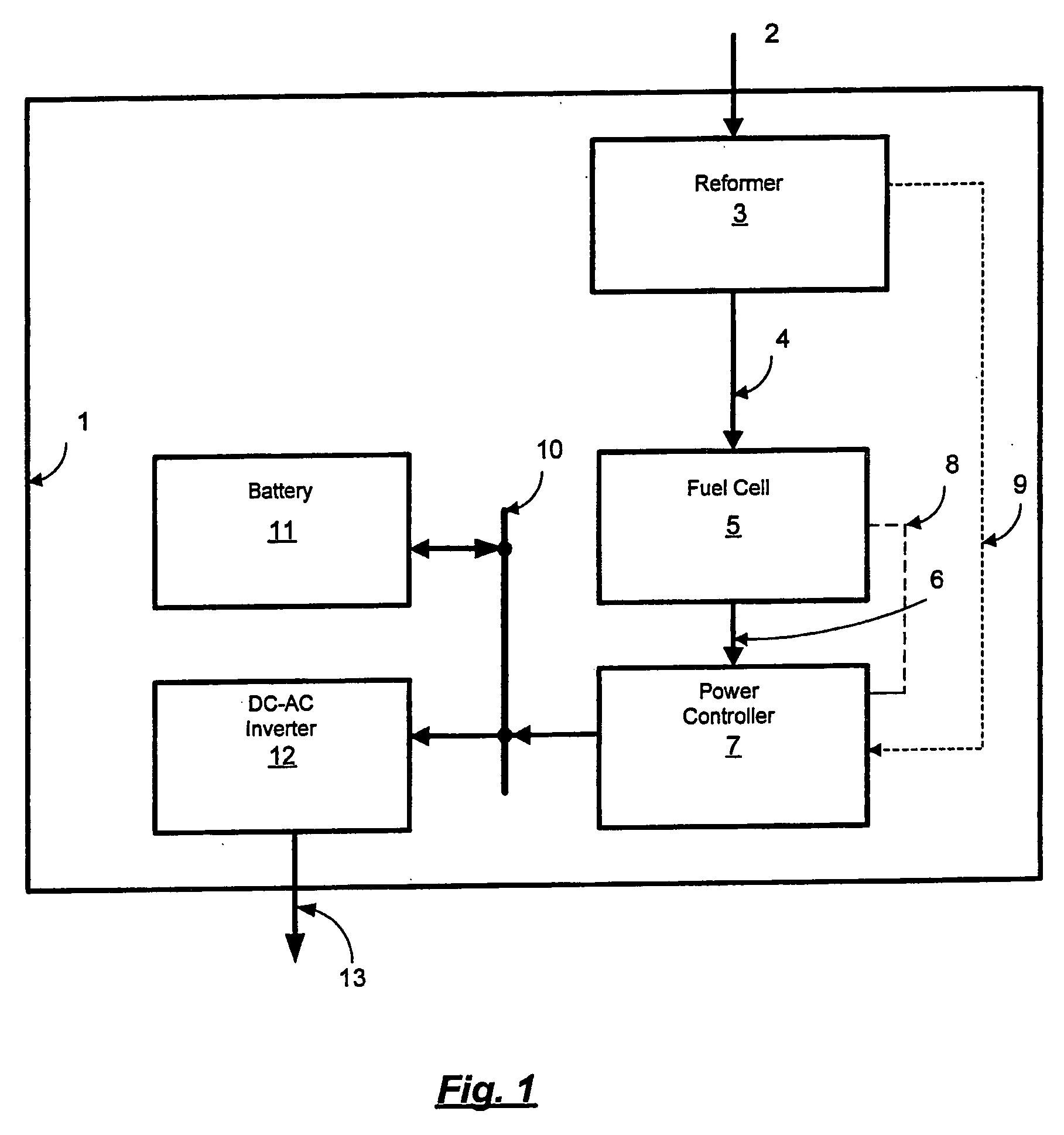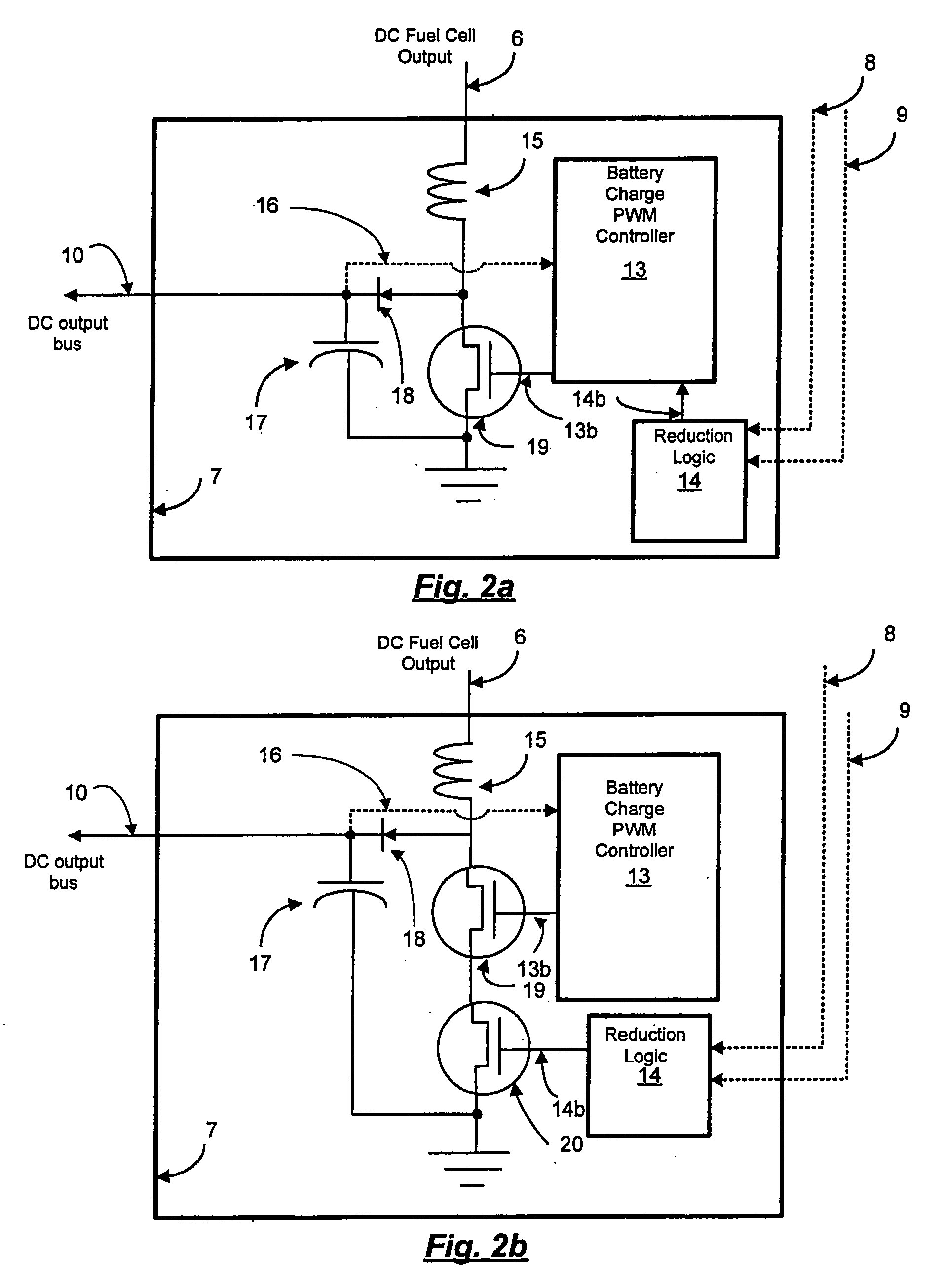Power controller for fuel cell
a fuel cell and power controller technology, applied in the field of electrochemical power systems, can solve the problems of large output voltage swing, which occurs, and difficulty in coupling the direct output of the fuel cell to electrical loads, and achieve the effect of reducing the variance of cell performan
- Summary
- Abstract
- Description
- Claims
- Application Information
AI Technical Summary
Benefits of technology
Problems solved by technology
Method used
Image
Examples
Embodiment Construction
[0019]FIG. 1 schematically illustrates a typical embodiment of a fuel cell power system with a power controller. Enclosure 1 contains reformer 3, which draws fuel through fuel inlet 2. Hydrogen produced by reformer 3 travels to fuel cell 5 via hydrogen line 4. Electrical power produced by fuel cell 5 is sent via line 6 to power controller 7, where it is then routed to DC bus 10. DC bus 10 can charge batteries 11 or send power to DC-AC inverter 12. Power controller 7 is configured to reduce the power output of fuel cell 5 responsive to one or both of the signals in lines 8 and 9. Line 8 provides a signal representative of the voltage across a stack or plurality of fuel cells while line 9 provides a signal representative of hydrogen pressure to fuel cell 5 in line 4. Reformer 3, fuel cell 5, battery 11 and DC-AC inverter 12 may be of any conventional type, and their structure and operation are well known to those skilled in this art.
[0020]FIGS. 2a and 2b depict a representative power...
PUM
| Property | Measurement | Unit |
|---|---|---|
| pressure | aaaaa | aaaaa |
| voltage | aaaaa | aaaaa |
| voltage | aaaaa | aaaaa |
Abstract
Description
Claims
Application Information
 Login to View More
Login to View More - R&D
- Intellectual Property
- Life Sciences
- Materials
- Tech Scout
- Unparalleled Data Quality
- Higher Quality Content
- 60% Fewer Hallucinations
Browse by: Latest US Patents, China's latest patents, Technical Efficacy Thesaurus, Application Domain, Technology Topic, Popular Technical Reports.
© 2025 PatSnap. All rights reserved.Legal|Privacy policy|Modern Slavery Act Transparency Statement|Sitemap|About US| Contact US: help@patsnap.com



